It may surprise you to learn that the Almond is actually sourced from a large tree known as Prunus dulcis. The Prunus dulcis is a deciduous tree from the Rosacece family, a large family of flowering plants. Where there are flowers there is often some form of fruit, and with the Prunus dulcis, we get almonds.
The tree is usually endemic to Iran and other dry and arid Asian climates. However, the almond is now best suited to be grown in the Mediterranean which helpfully gives Europe so much easier exports of this widely cultivated nut.
Perhaps even more surprising is the fact that the subspecies of Prunus the almond is from is also grouped alongside certain stone fruits such as the peach and plum. However, the drupes that form the almond within a corrugated endocarp (shell) which is hard and inedible.
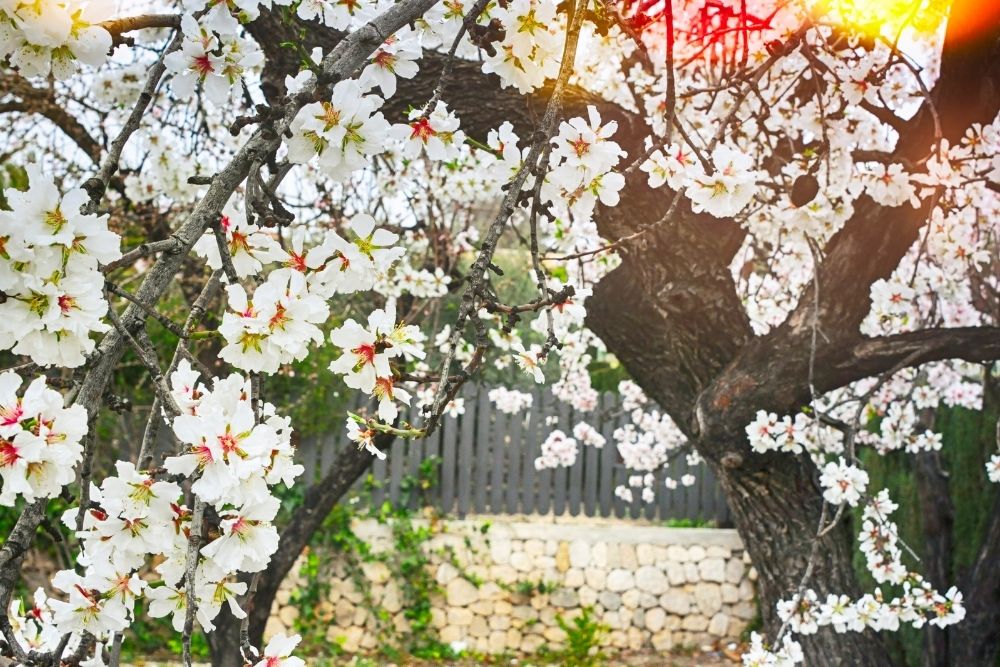
Botanically recognised since 1801, the Almond plant has been on an interesting ride since this date, becoming particularly popular and widely cultivated in the 80s the Almond now owes 68% of its production and cultivation to the United States.
Recently, over 3,000,000 tonnes of almonds are produced per year since they have been given ‘superfood’ status by Instagram recipe makers and almond milk alone is hugely desirable product within the vegan market which has by proxy become part of the generic food market meaning the production forecast for almond production is only going to increase now the demand is more and more.
This said, there are plenty of cultivars out there which are essentially heirloom cultivars even if not given this classification officially.
Many people now grow Prunus dulcis (syn. amygdalus) purely for their flowers and the potential of fruit and thus nuts. Their flowers appear in early spring and are ‘fully formed’ with five petals, the flower head becoming around 2 inches in diameter.
These flowers can be particularly beautiful, even the subject of a Van Gogh painting, but are often overlooked for their now profitable fruit cultivation. Let’s see how their flowers change with cultivars.
1. Prunus Dulcis (Syn Amygdalus) ‘Robijn’
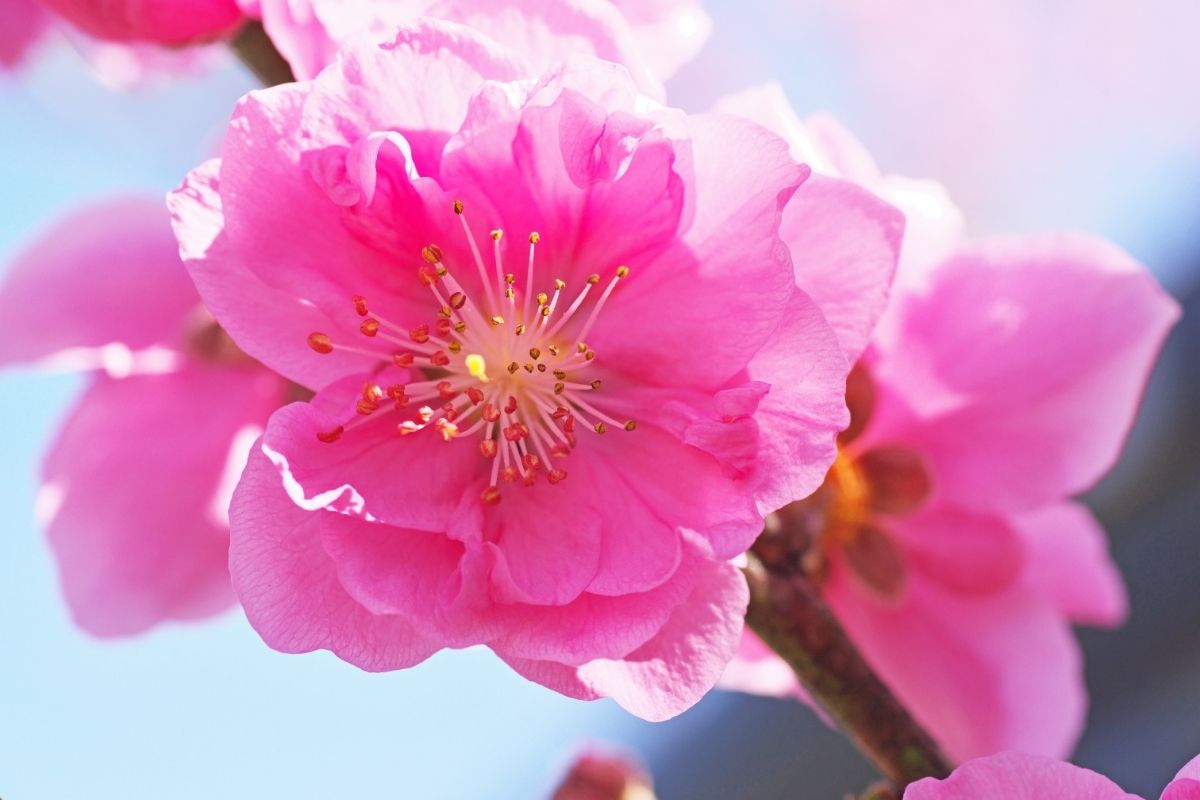
This Prunus tree is self-fertilizing and doesn’t need a pollinating partner as some trees of this kind do. Having a fellow Rosaceae tree nearby would aid this process though isn’t necessary. When mature this tree can grow to around 13- 14 feet high. Branches don’t start till further up the trunk, when mature, so this Almond doesn’t spread too wide.
Flowers begin appearing on the tree around March or April and are a perfect spring blossom to get you ready for some summer vibes. The flowers have five petals and are typical of most prunus flowers and have a similarly typical scent which is pleasant.
They have a particularly interesting centre where a star shape is formed from the negative space created by the five petals. Rather unusually the petals are a lovely pink color which isn’t, making this a particularly interesting cultivar for home growing.
The fruit forms in large, hard green pods under the green serrated foliage and will open, ready for harvest, around September or October. Pruning is often discouraged to encourage the growth of fruits.
2. Prunus Dulcis (Syn. Amygdalus) ‘Princess’

This particular cultivar is interesting for its curiously dark endocarp which encases the capital nut. Once the endocarp starts opening it exposes a lighter brown shell, not typical as a green shell that encases the nut is the most common.
This apparently births a particularly sweet almond nut. This is of interest to certain cultivators who cultivate this specific genetic variety for this sweet version of the nut. The warmer the growing climate the sweeter the nut will be for you, so this grows well in the US, although shelter should be sought. This Prunus will grow to 13-14 feet in commonality with the genus.
Even when not in the fruit bearing season, this tree will bear some beautifully pink flowers in the spring that are worth more in adoration than the money that the nuts bear.
3. Prunus Dulcis (Syn. Amygdalus) ‘Sultane’
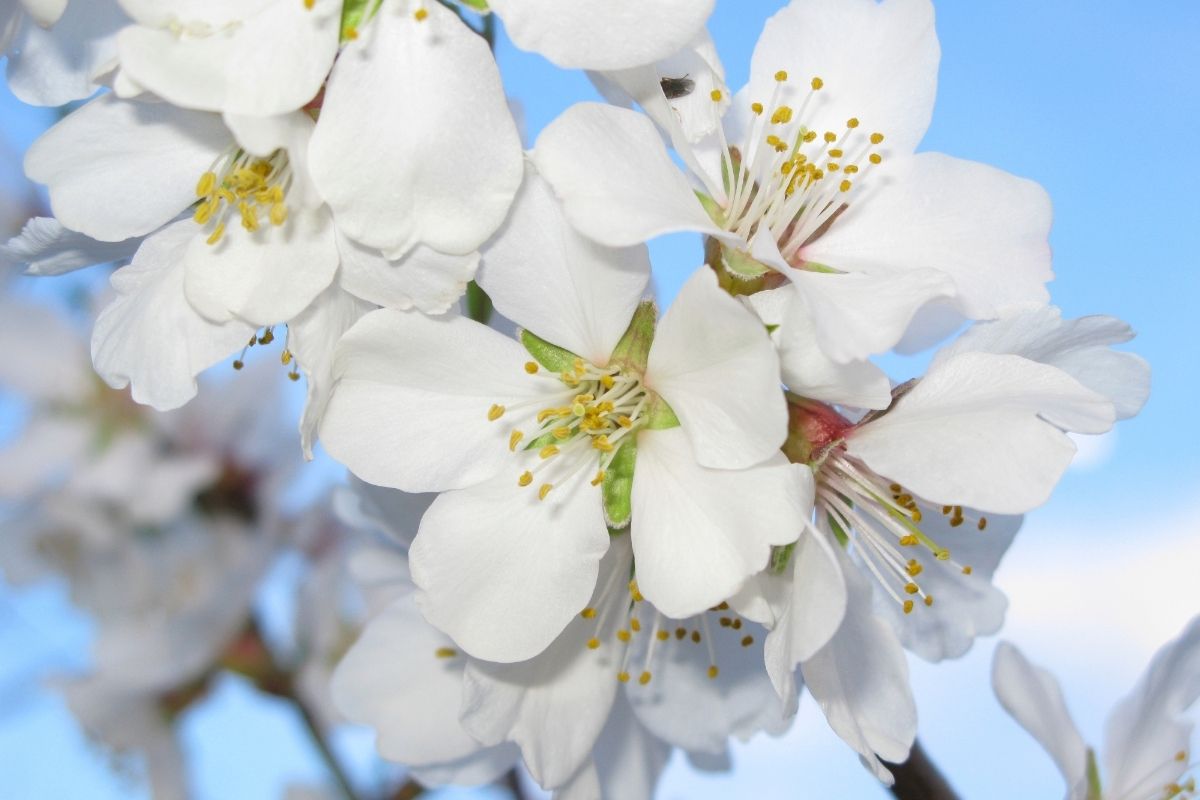
This particular Prunus dulcis cultivar has a much green endocarp in comparison to the ‘Princess’ cultivar, although produces a similarly sweet almond nut. While this cultivar has similarly pink flowers in comparison to others it grows a lot fast and also higher. This Prunus dulcis cultivar can reach around 15-15 feet in height which is higher than most of this variety.
Again, expect pink flowers from this cultivar. However, unlike the other cultivars, this specific cultivar doesn’t have a particularly strong scent which could be desirable for some uses.
4. Prunus Dulcis (Syn. Amygdalus) ‘Avijor’
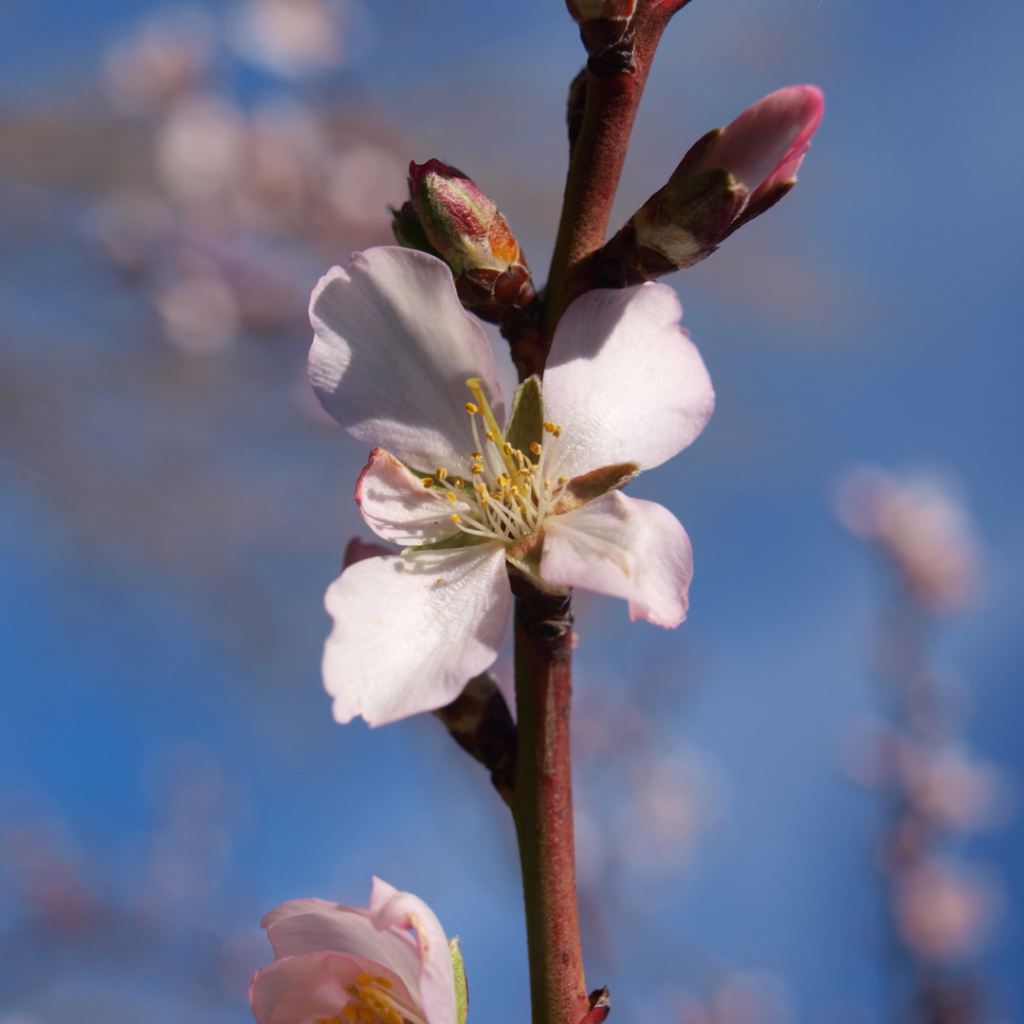
This is a dwarf variety made for the patio of an American garden. WHen mature this will reach a height of around 10 feet. While small this Prunus variety is still a flowering plant and will bear flowers during April and May.
However, this will take till around August and September to bear fruit that is ready for harvest although this is much earlier than most Prunus varieties which can take until October to bear fruit.
This dwarf variety is perfect for homegrown almonds from the comfort of your balcony. Commonly, the flowers are pink like other cultivars though generally not common for Almond trees.
5. Prunus Dulcis (Syn. Amygdalus) ‘Carmel’
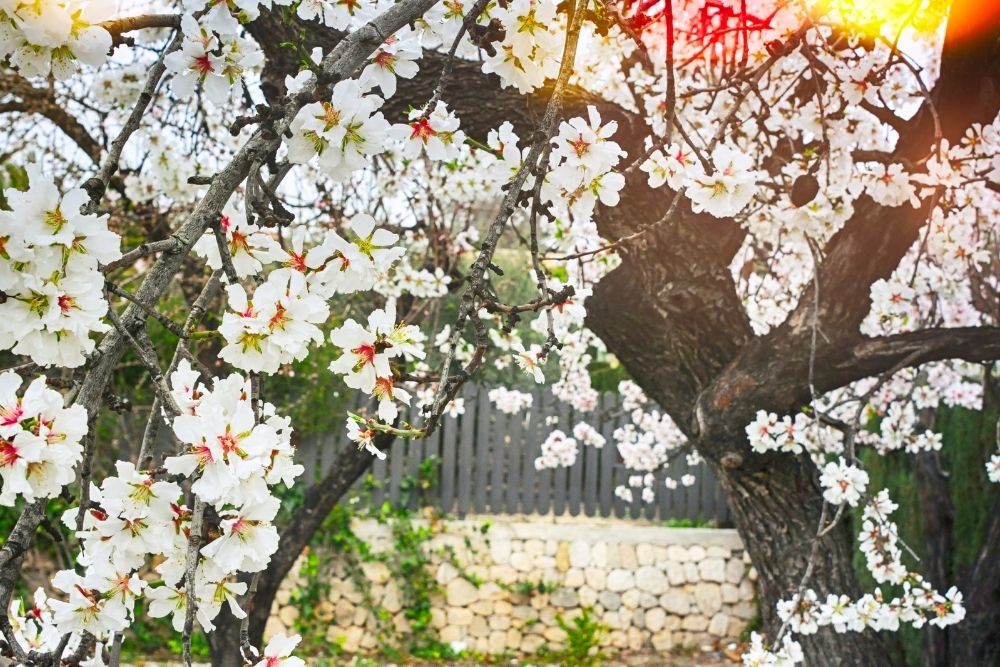
This is a slightly smaller, although not dwarf variety, of the Prunus dulcis which produces some food grade almonds. Carmel trees come to harvest much later than some Prunus dulcis varieties but the nuts are of particular quality. The bloom is a whitey pink color but is suseptible to rot.
Similarly, this particular variety is also susceptible to a rare genetic disorder known as ‘crazy top’. Crazy top affects quite a lot of crops and is a pathogen infection that causes stunted or distorted growth.
To prevent this make sure the soil is well drained when growing. If buying from a nursery, perhaps check their fields out before purchasing. In any case, this cultivar does produce quality nuts for all its faults.
6. Prunus Dulcis (Syn. Amygdalus) ‘Monterey’
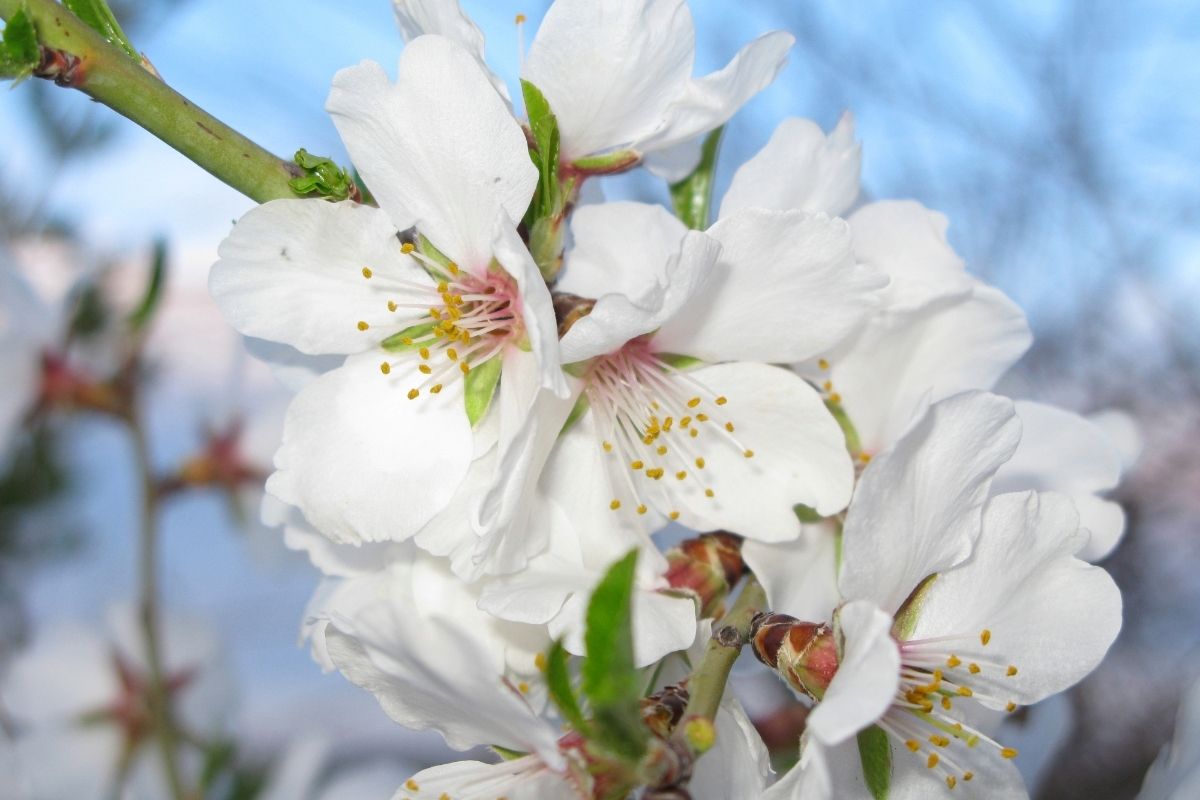
This is a naturally small variety that isn’t classed as a dwarf species. For its height it has a relatively large spread. Its exocarp is particularly soft for the Prunus dulcis and is elongated more than usual, yet its nuts are of particular quality and have an excellent flavor.
Interestingly this has an early blooming period in March, but its harvesting period is much later in the October months. When the plant does eventually come to harvest the yield is greater than that of most varieties. When mature it is around 12-15 feet.
7. Prunus Dulcis (Syn. Amygdalus) ‘Nonpareil’
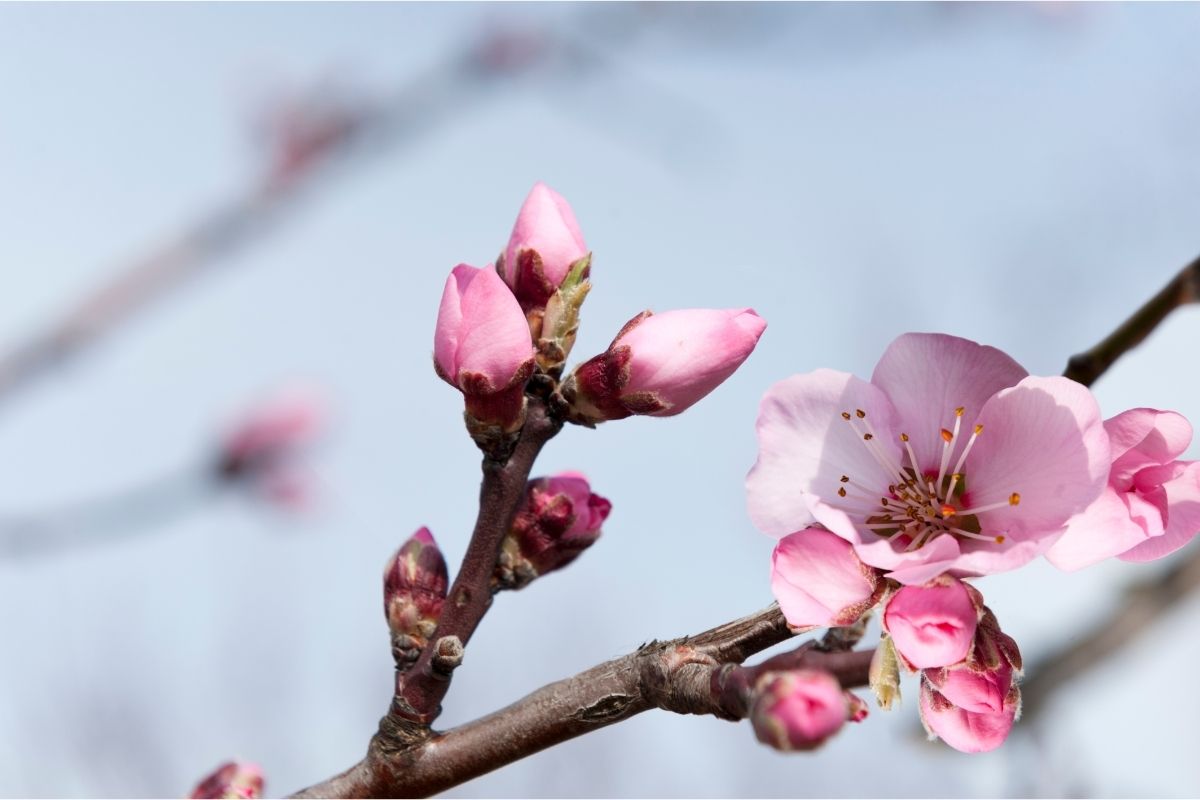
This is an old but sought after almond tree variety within California almond farming. The tree is relatively large for the varieties, growing to 15 feet when mature. Like most Prunus dulcis, this blooms early in the spring with white flowers but later in the season it will actually be ready to harvest its nuts.
As the tree has quite a large spread when mature it is sought after for its high production of nuts, but also for the fact that it is fairly resistant to diseases that cause bud failure such as ‘crazy top’.
The Final Say
There you have it, the Prunus dulcis. The Prunus dulcis is synonymous with the amygdalus variety which are exactly the same, it was simply renamed. The renaming happened due to the fact amygdalus was used more regularly in neurobiological terminology so was an issue when it came to botanical nomenclature.
Almond trees come in all sorts of charities as shown, if you are a city dweller but want to get your hands on some nuts, then there are dwarf varieties that will grow perfectly on balconies and patios. Just be prepared for your deontic limits of the word ‘dwarf’ to be tested as it grows over the years.
Generally, the main thing agriculturists look for in the tree is a degree of hardiness as well as resistance to bud loss diseases such as crazy top which is common in overwatered crops. Moreover, the large trees become the sought after varieties as the larger they are the more fruit can be gained, technically. Farmers also enjoy varieties that have a good exocarp for harvesting.
Although as mentioned, the Prunus dulcis is often overlooked for its ornamental qualities in favor of its heirloom qualities. The blossom of an Almond tree can be particularly desirable in a garden and not only looks great but also can have a particularly sweet and pleasant scent which is also overlooked commonly.
Hopefully this guide has shown you the variety of the Prunus genus, as well as the variety within the Prunus dulcis subspecies. Not only are these trees producers of a now profitable nut, but they also produce blossoms that are beautiful.
An almond tree is particularly great to look for if you want a tree project that isn’t too long lasting. Most almond trees will last for a long time but will produce fruit after around 3 years.
Editor’s Recommendations
10 Awesome Trees That Start With O (Including Pictures)







